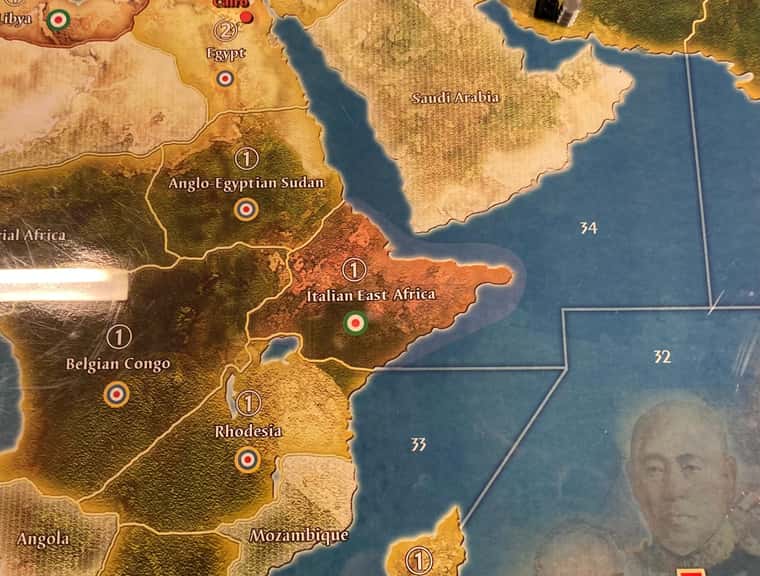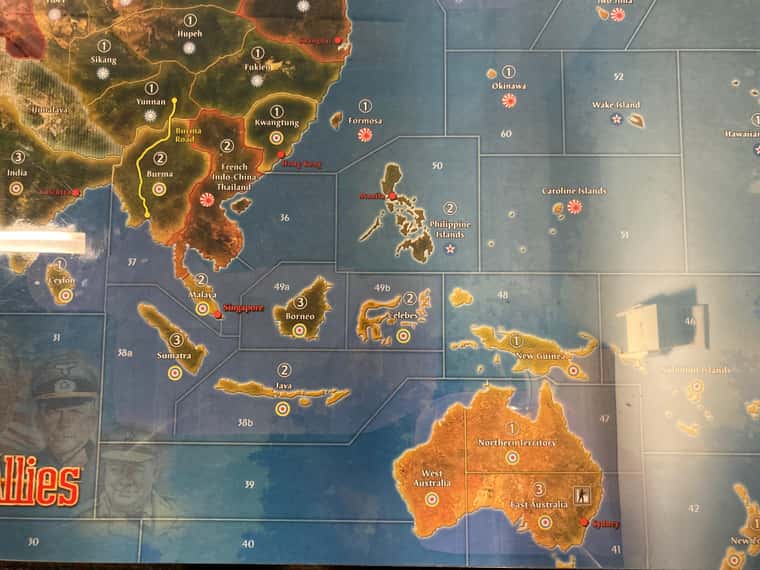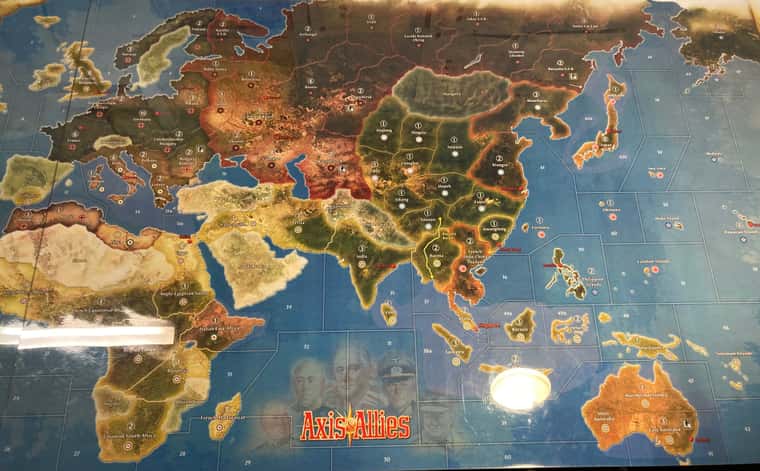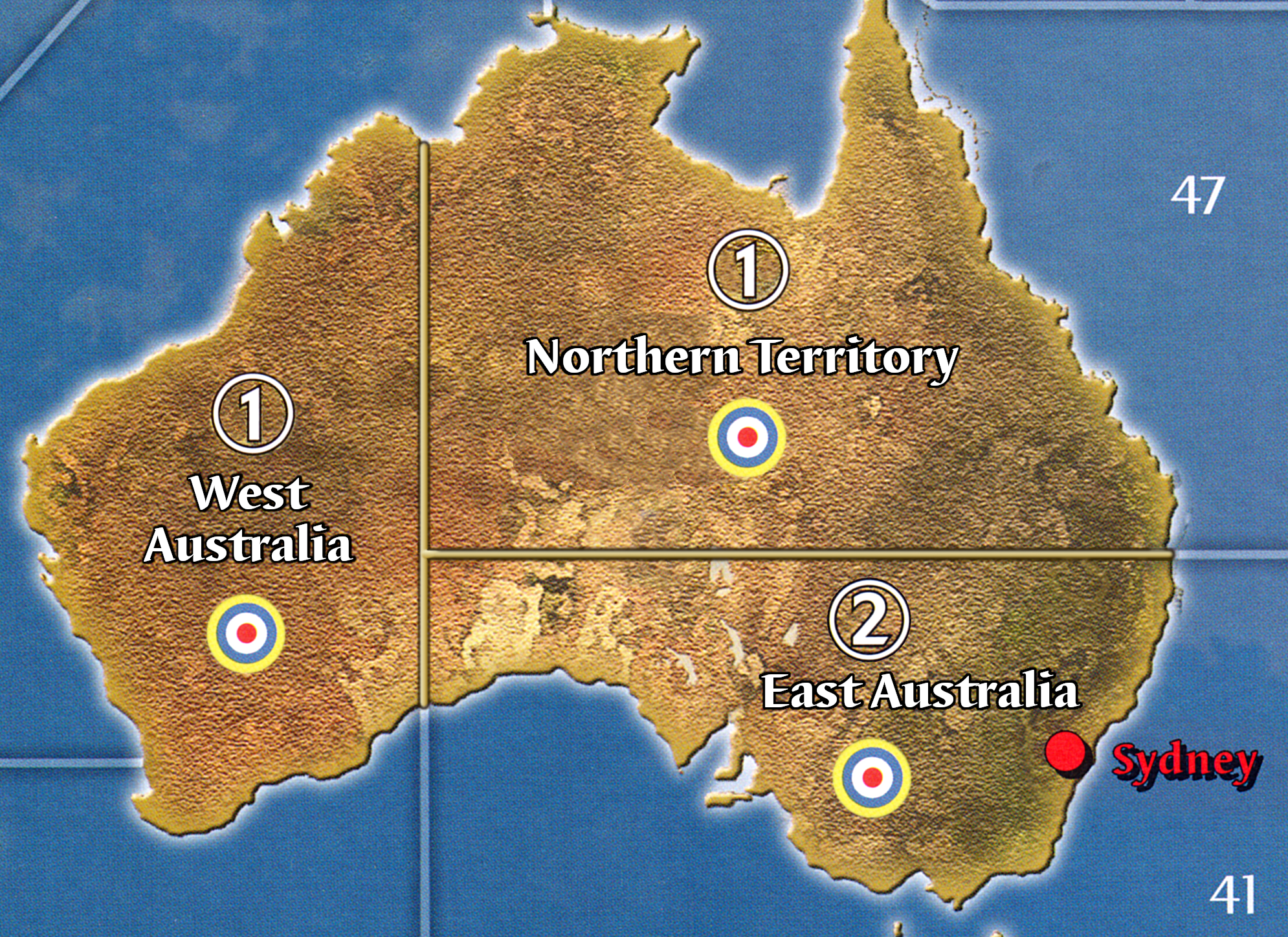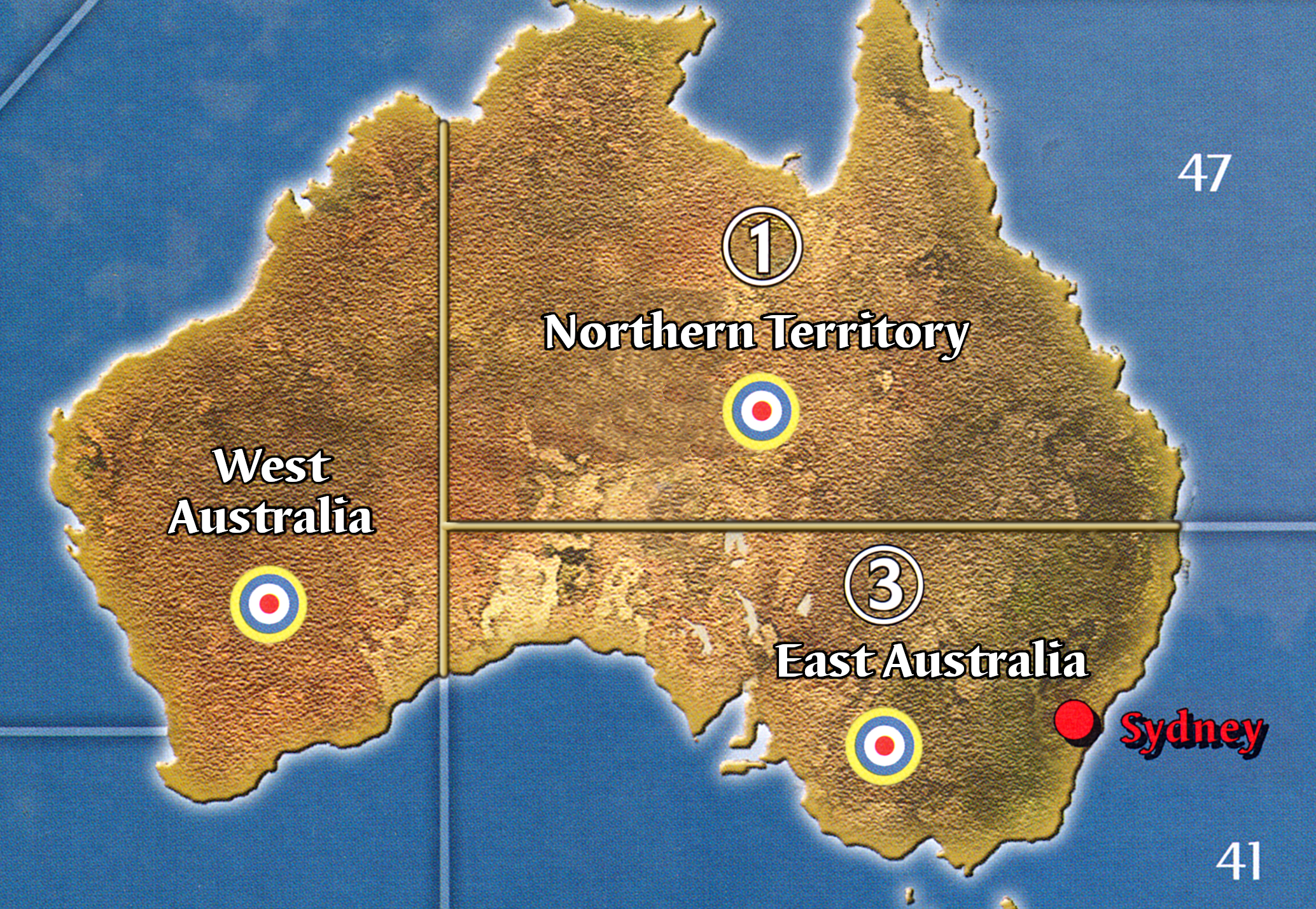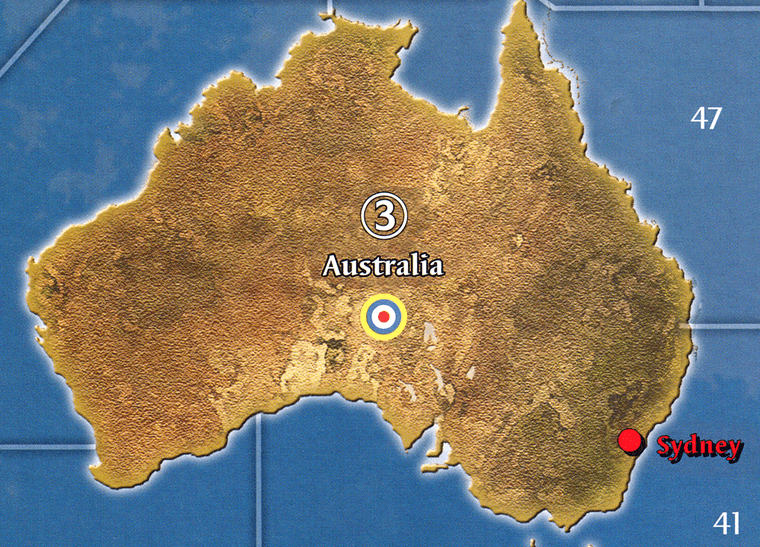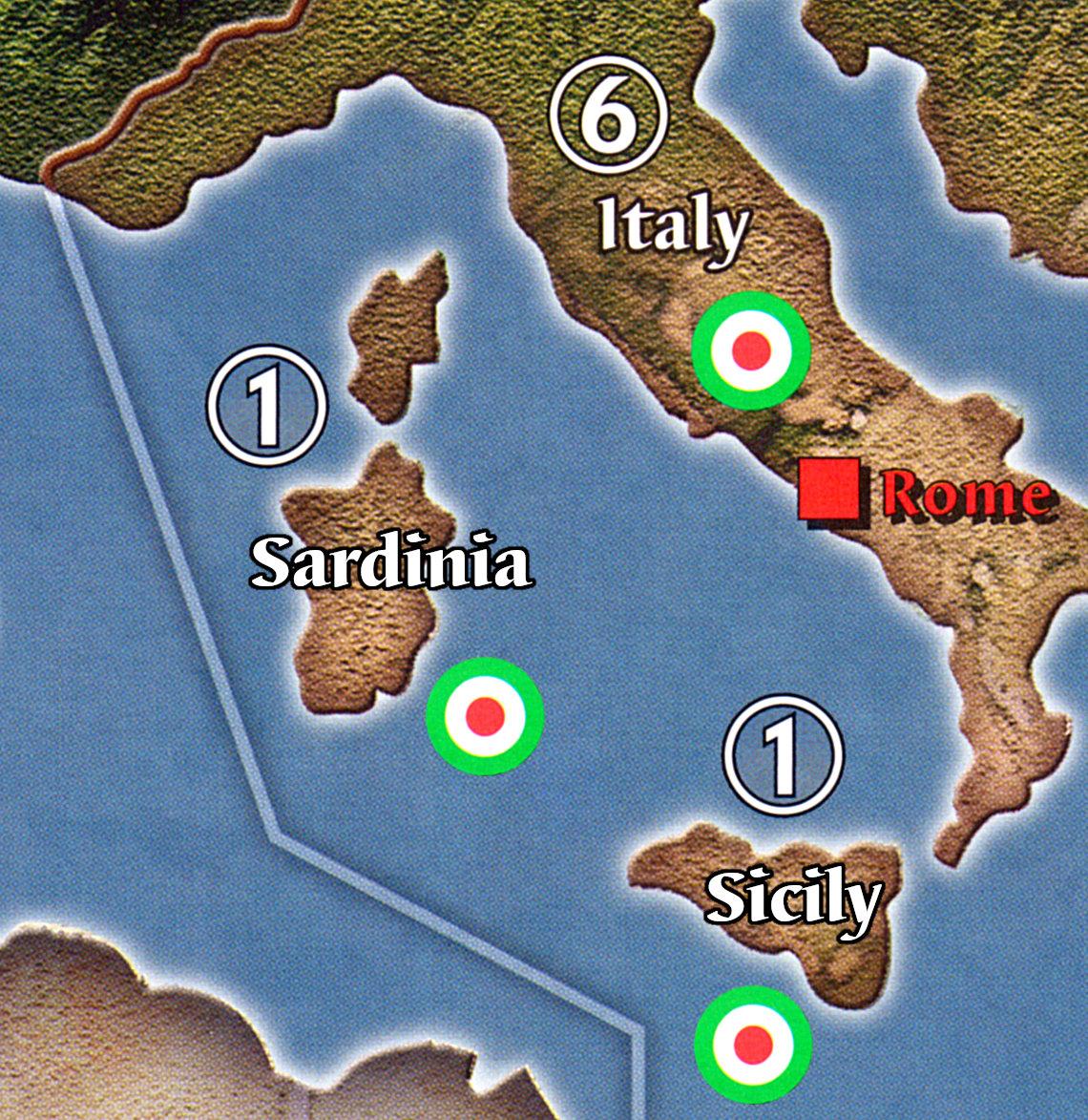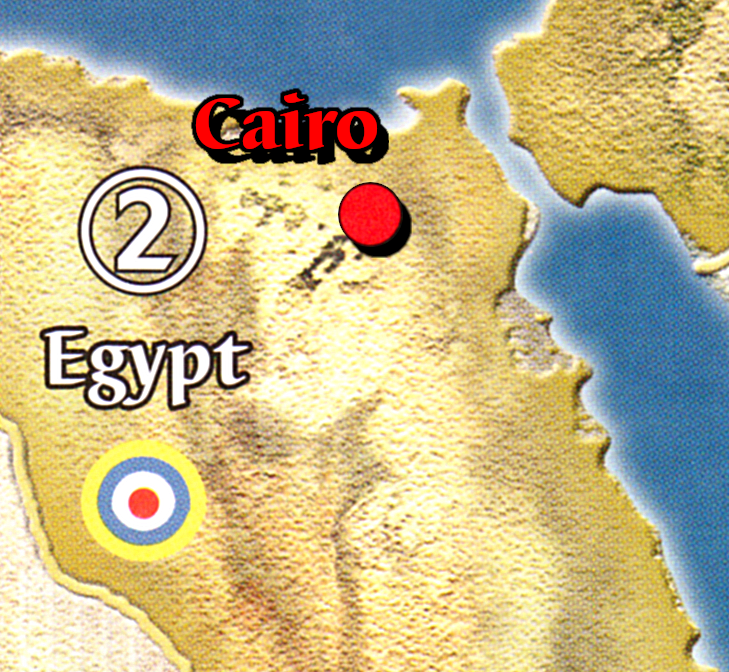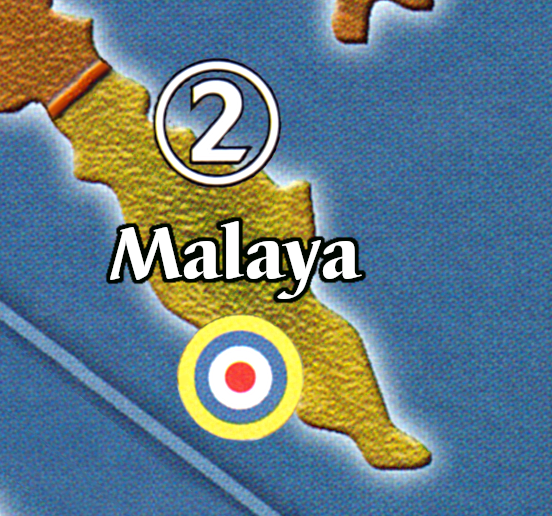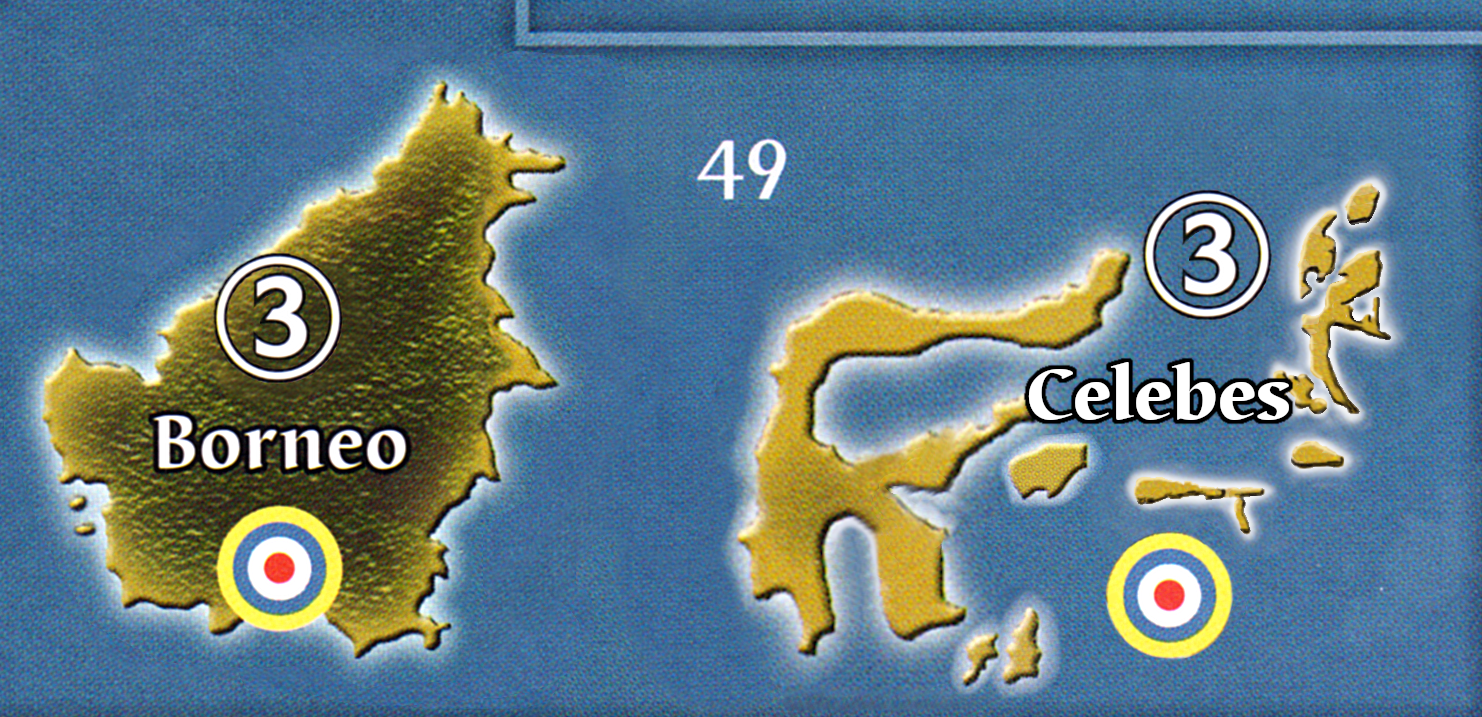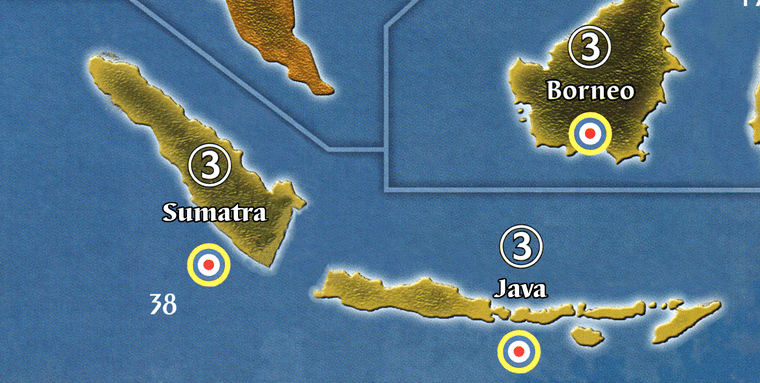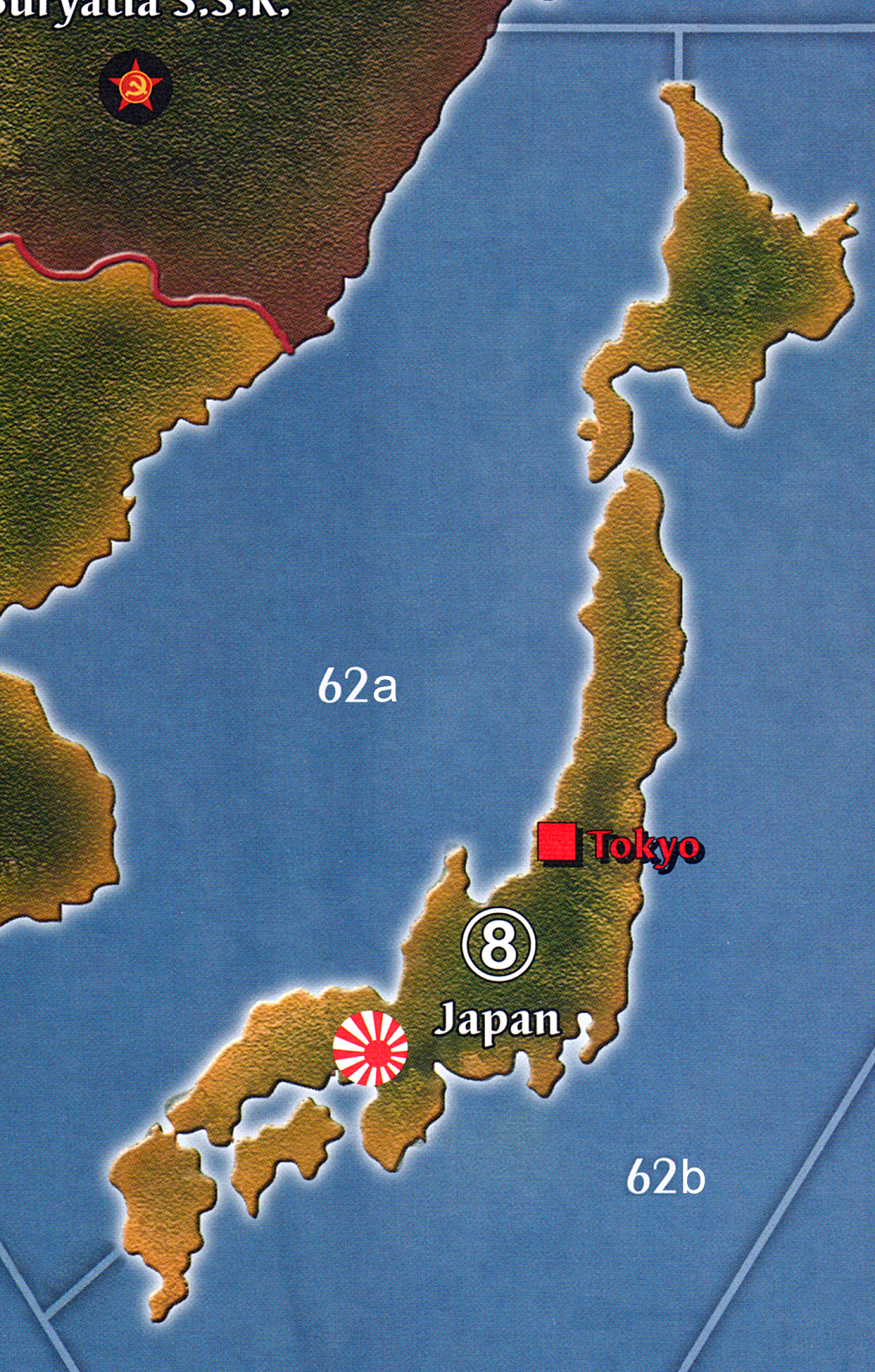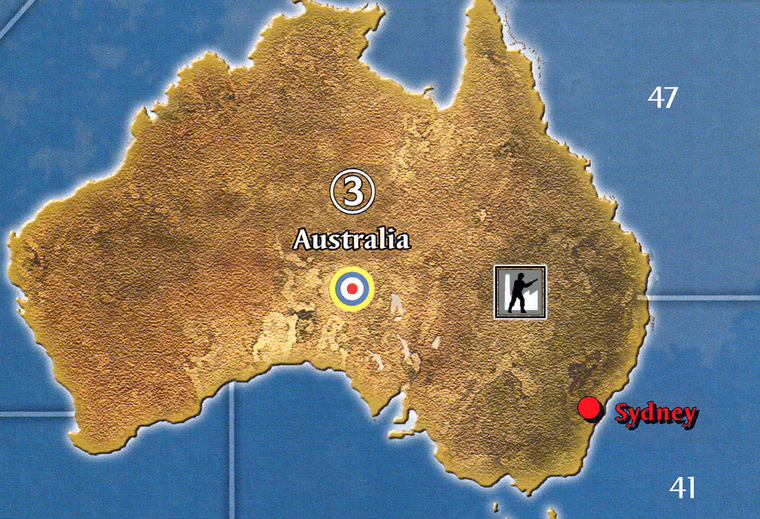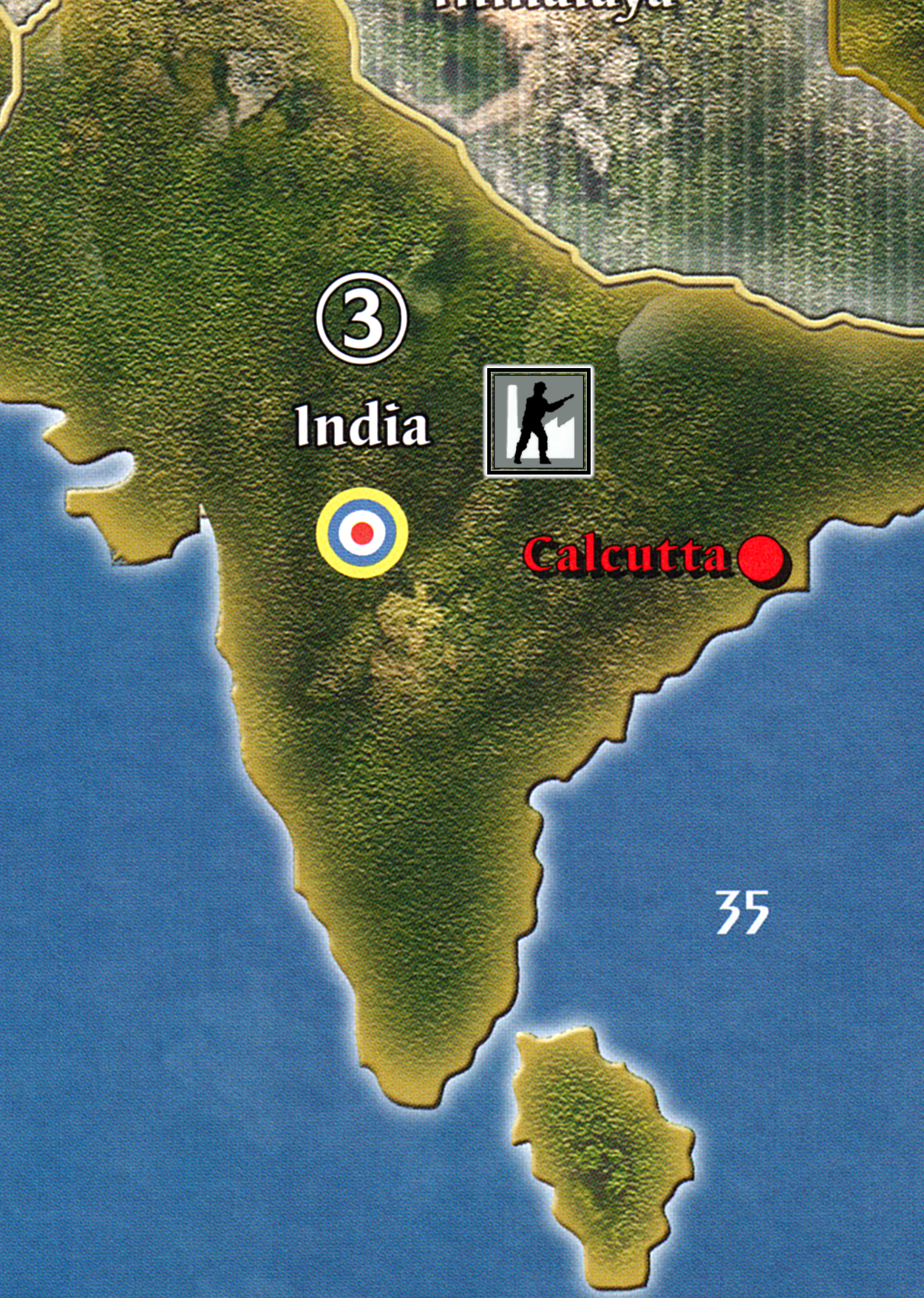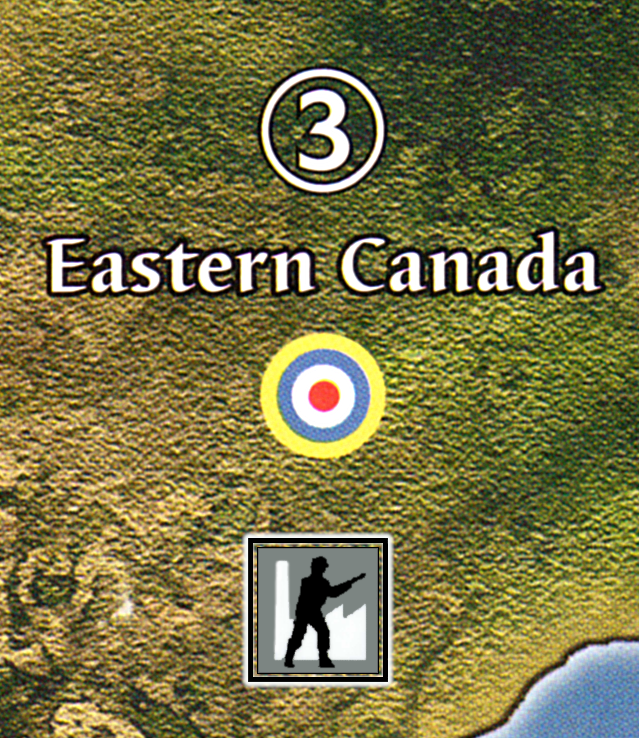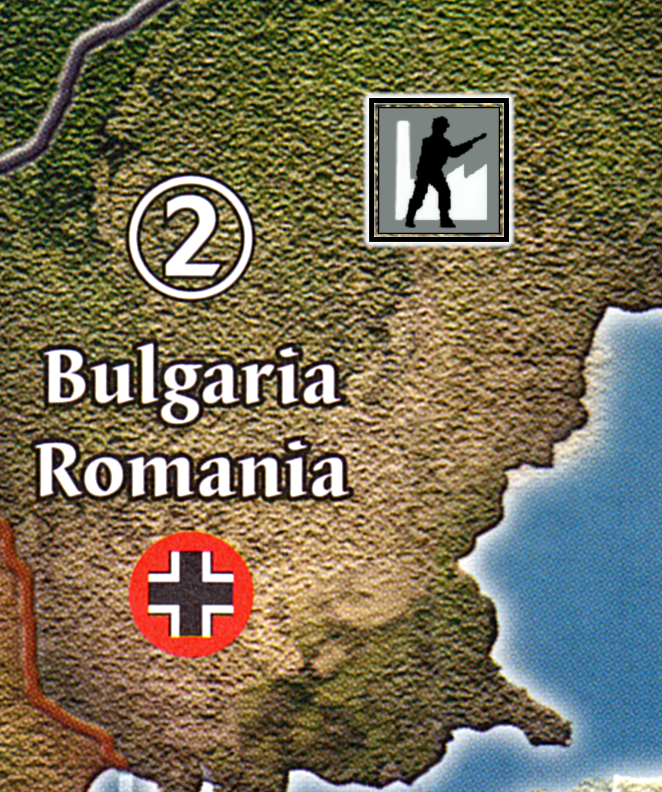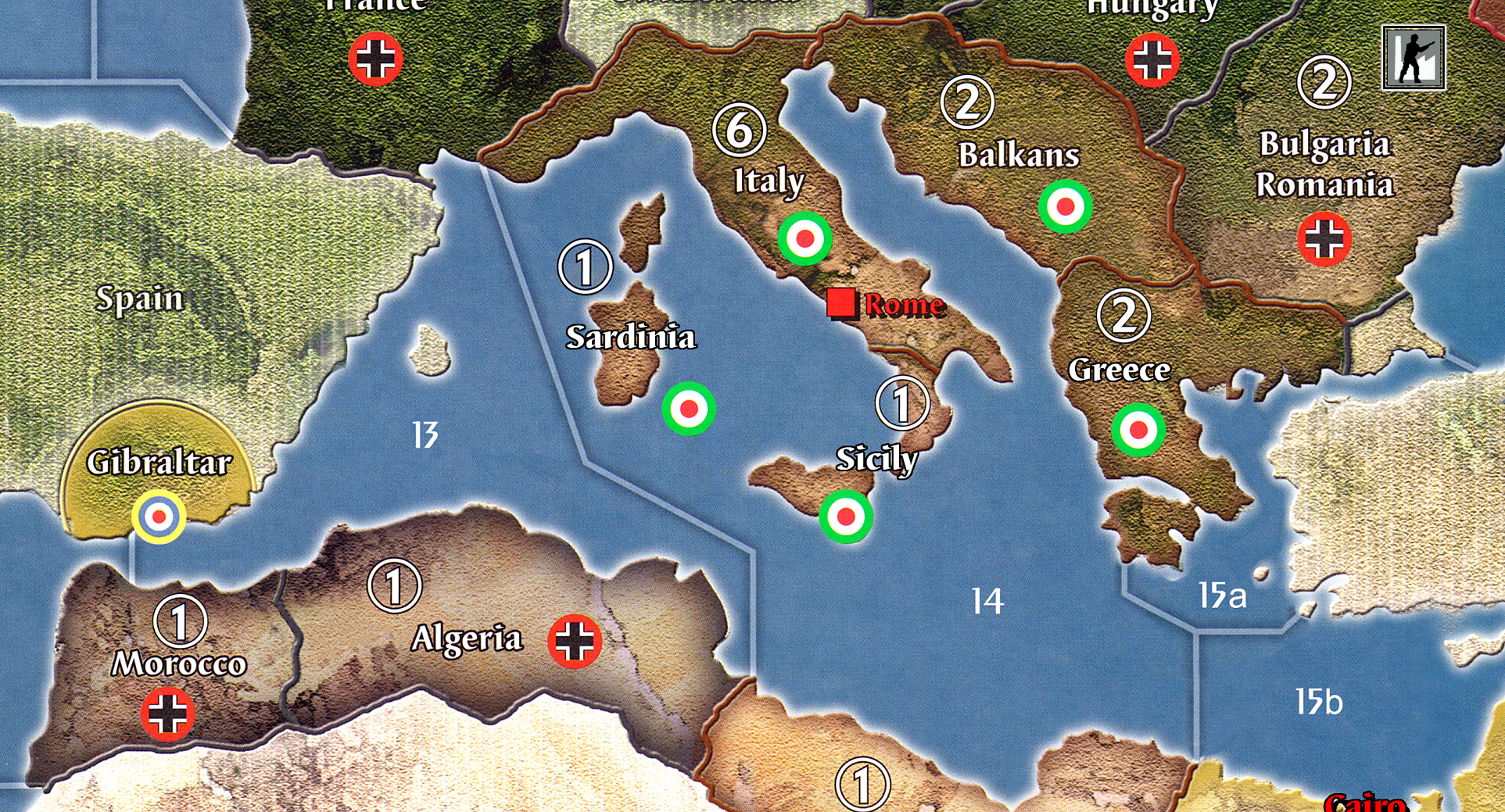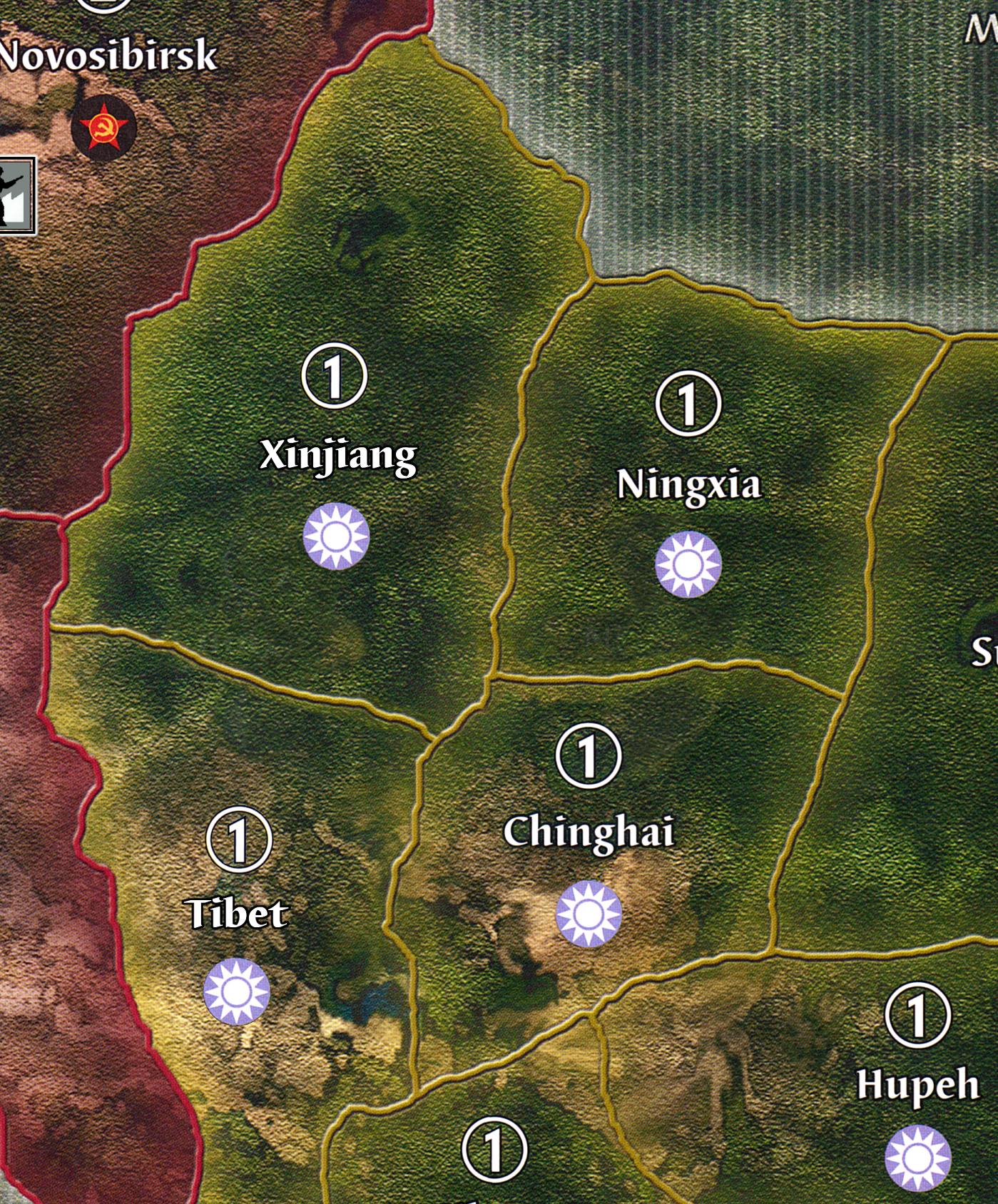Pellulo
This scenario is Axis Germany & Ottoman Empire, versus, Allied British and Italian Empires, &, U.S.A.
Round One: GE. builds 2 BB & transport, moves fighter from capital to Kiel. Combat from Home Waters to British Home Waters, 2 C, BB, 2 subs.(from sea zone #5), versus, British 2 C, BB, &, transport. Losses only damaged GE. BB & C survive. Meanwhile at Sea Zone #7 two subs. go off Canada, &, sink for no lost, Canadian C & transport.
Try to take enough of the Brit. Home Islands, is easier than trying to link up with the Ottoman fleet, much less send a transport with reinforcements to Jordan.
In Togoland trooper takes undefended Gold Coast, &, another trooper from Kamerun takes undefended Nigeria. Also S.W. Africa trooper & gun enters Brits. South Africa, versus, Brits. trooper & gun. Both sides lose a gun, &, colony contested.
British Empire builds for India a fighter, &, BB & C from India to link up with C off Egypt, while transport off latter heads towards India. In UK troopers and guns reposition themselves on Home Islands.
South Africa defending trooper versus invading GE. trooper(losses GE. trooper, colony is uncontested!). Trooper from Rhodesia & Brit. E. Africa, enter GE. E. Africa, losses trooper each side, the colony falls! While another trooper goes from Sudan to Egypt.
Egyptian garrison of 6 troopers & 2 guns enter Jordan, while BB & transport from India lands trooper & gun into Jordan(BB shelling takes out a defending trooper, &, defending gun none). Losses Allies 2 troopers & Axis trooper & gun, Jordan falls!
Ottoman Empire builds sub., fighter, &, gun. Forces from Syria & Smyrna into Jordan. Desperation has crept into their situation. A trooper from Anaka to Mesopotamia, while rest of garrison goes to Syria. Also 4 troopers go from capital to Smyrna. Battle in Jordan, 7 troopers & gun, versus, British 6 troopers & gun. Losses Axis 6 troopers & Allies 2 troopers, Jordan is contested.
Italy builds sub. & fighter, moves forces in Africa to Egypt. Also BB & transport lands 2 troopers in Jordan, BB scores a hit, along with a hit from each landed trooper. Ottoman gun fails to score a defending hit, losses Allies all, &, Axis losses two out of three troopers and, lost of the gun.
U.S.A. builds fighter and two transports. BB & C arrive off Canada, versus, two GE. subs. Losses Allies BB damaged, &, Axis all.
Round Two: GE. builds BB, C, sub., transport, &, fighter. Moves 2 BBs & transport to go off Scotland(with fighter from Kiel), with no mine lost. Joining already there, damaged BB, C, versus, British 2 BBs. Losses Axis fighter, C, &, another two BBs damaged, &, Allies all. Three BBs shell(score two hits), from transport trooper & gun land in undefended Scotland, &, it falls!
British Empire builds 3 troopers for India, &, trooper, gun, sub., &, C. Two transports & BB off Jordan head for India. Trooper moves from South Africa to GE. S.W. Africa, &, undefended colony falls! Another trooper goes back to Egypt from GE. E. Africa, while in Egypt another trooper goes to Jordan.
Combat, BB shells and hits an enemy trooper(no losses due to defending gun fire). Landed 3 troopers & gun, versus, 2 troopers & gun. Losses Allies 2 troopers, &, Axis all, Mesopotamia falls!
In Jordan 5 troopers & 2 guns, versus, Ottoman trooper & gun. Losses Allies a trooper & Axis all, Jordan falls again. Meanwhile from Yorkshire 4 troopers & gun, enter Scotland, versus, defending GE. trooper & gun. Losses Allies 2 troopers & Axis all, &, Scotland freed!
Ottoman Empire builds 2 troopers, gun, &, fighter. From capital to Smyrna trooper & gun, while Smyrna garrison into Jordan, & , trooper from Syria into Mesopotamia(trying to restore empire’s borders).
From Home Waters, 2C, submarine, &, fighter(no mine lost), versus, in central Med. Sea, Italian BB & transport, and, British 2C. Losses all Axis, &, only Italian transport survives.
Four troopers & 2 guns, versus, Brits. 4 troopers & 2 guns. Losses Axis 3 troopers & 2 guns, &, Allies 3 troopers, Jordan is contested.
Four troopers & gun, versus, Brits. trooper, gun, &, fighter. Losses Axis 3 troopers & Allies all, Mesopotamia is uncontested.
Italy builds transport & C. Moves trooper from Brit. E. Africa to Sudan. Transport from Rome to Jordan, lands trooper & gun, traveling along with Sub. & C. Combat 2 troopers & 2 guns, versus, Ottoman trooper in contested Jordan(all Axis is lost).
U.S.A. builds BB, transport, &, gun. Moves BB & C from Sea Zone #2 to off Ireland(C continues to join British Fleet off London), with 2 transports from East Coast. Landed 2 troopers, 2 guns, &, fighter(flown in from East Coast) onto Ireland.
Round Three: GE. builds 2 BB, transport, &, fighter. Moves fleet from Kiel to off London(to join rest of fleet there), while a empty transport returns to Kiel. BB, C, sub., &, transport arrive with no mine lost. Battle 4 BBs(two already damaged), C, Sub., &, transport, versus, British C & sub., &, U.S. Cruiser. Losses Axis 2 more BB are damaged, C, &, sub., &, Allies all.
Landing 4 BB shell & take out 2 defending trooper, while defending gun takes out trooper, gun cannot land by itself, &, fighter that flew in from Kiel scores no hit. Landing has failed!, better 2 trooper landing, than a trooper & gun set. GE. has for now control of seas between Kiel & London, but, still cannot lend direct support to Turkish Ally, much less make a landing in British Islands.
Ottoman Empires sues for Peace!, they know with U.S. fleet arriving & transports with land forces for U.K., GE. will not make much of an impression on British Home islands. On Brits. next turn, they will probably take Syria, maybe Mesopotamia, much less Italian units landing in Jordan(Ottoman need peace in order to save the empire). Even thought Allies fleets are spread out, they have Ottomans boxed in. While GE. 3 damaged & 3 undamaged BBs are too far away to help(Axis slight edge in naval forces will not help in Mid-East).
In land forces GE. rules, but, they are all in the wrong place to be effective, while Italy & Brits. are very close or touching the Ottoman Empire(while the US forces are all in round one, in just one area).
Minor lost for the Axis, GE. gives back both British colonies, while Brits. give back Jordan and one GE. colony. Ottoman comp. GE. with oil, and, the remaining GE. colony split between Allies( U.S.A. does what it likes to do, make a new nation).
IPCs lost in units: Axis trooper 20 & Allies trooper 16, guns 8 & 1, fighter 2 only Axis, transport 2 only Allies, sub. 6 & 1, Cruiser 5 & 7, BB 4 Allies only.




